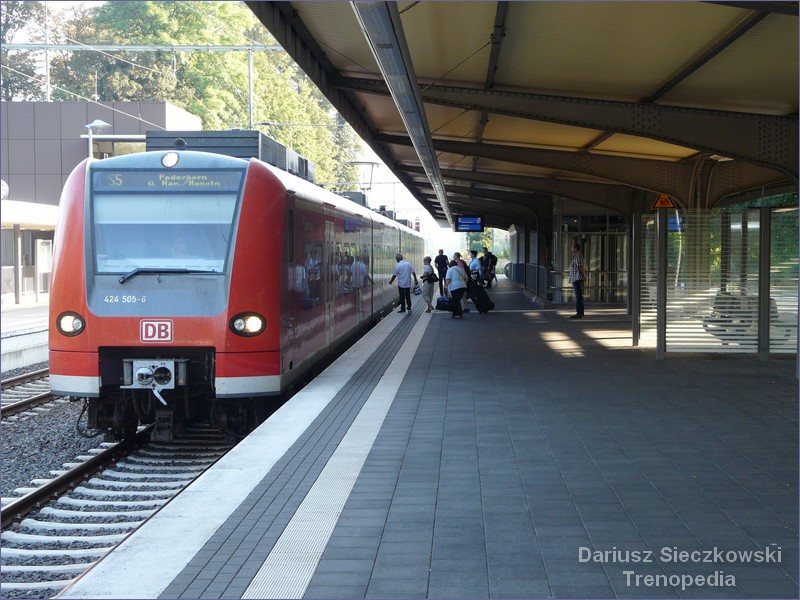For many years, trains in Germany were synonymous with safety, high quality and punctuality, and traveling by train in Germany was a pure pleasure. However, for some time now, trains in Germany have been canceled without notice, railway workers from time to time go on strike, and due to cheap tickets, regional trains are often overcrowded. Nevertheless, the train remains the best way to explore Germany.
Railway network in Germany is well-developed. Most of the trains is operated by Deutsche Bahn but there are a number of minor railways and tourist operations.
Tourist attractions in the country include well-preserved narrow-gauge railways, railway museums, railway landmarks, and impressive railway stations.
Last updated: 20.06.2025
Train travel in Germany – table of contents
1. Long-distance trains
2. Regional trains
3. Day train trips from the largest cities
4. Railways on German Islands
5. Rack railways in Germany
6. Railway museums in Germany
7. Scenic railways in Germany
8. The best cross-border offers
9. International trains
10. A brief history of the railways in Germany
1. Train travel in Germany – long-distance trains
Germany is a beautiful country with numerous railway landmarks, charming towns, and well-preserved castles and palaces. Long-distance trains connect all major cities in the country, even the mainland with the German islands: Sylt, Rugen and Usedom. Almost all of the long-distance domestic trains are operated by Deutsche Bahn. Long-distance trains in Germany are fast and comfortable. The ICE3 trains reach speeds of 300 km/h on some sections. Personally, I like trains comprised of carriages. All trains are equipped with air-conditioning and vacuum toilets.
Timetable:
Deutsche Bahn – official website. Search engine, timetable, additional information
International bahn – search engine
Flixtrain – open access long-distance operator
Tickets are very expensive, but buying tickets at least a few days before your journey you get the “Sparpreis” reduced fare. These tickets are much cheaper than based-price tickets but are non-refundable and non-changeable. These tickets are limited. Deutsche Bahn has a range of ticket types and offers cheap tickets.
In recent years long-distance trains in Germany are often delayed or cancelled.
Categories of long-distance trains in Germany:
IC – Intercity trains. Locomotive with carriages or double-decker push-pull trainsets known as IC2. Personally, I prefer trains with first- and second-class carriages and a dining car. Passengers can choose between carriages with compartments or coaches.
ICE and ICE Sprinter – the fastest trains running between the largest cities and on selected international routes. They reach a speed of 300 km/h, currently there are 4 types of trainsets – personally, I prefer ICE 2 trains. Compartmentless carriages, restaurant car available.
EC – Eurocity trains. Comfortable international trains with first- and second-class carriages and restaurant car.
RJ & RJX – international trains operated by Railjet trainsets.
Seat reservation is optional on IC and ICE trains to Germany, but on ICE Sprinter trains seat reservation is mandatory.
Some of the IC and ICE trains run as an overnight trains.
Most popular routes:
Berlin – Hamburg
Berlin – Cologne
Berlin – Frankfurt am Main
Berlin – Munich
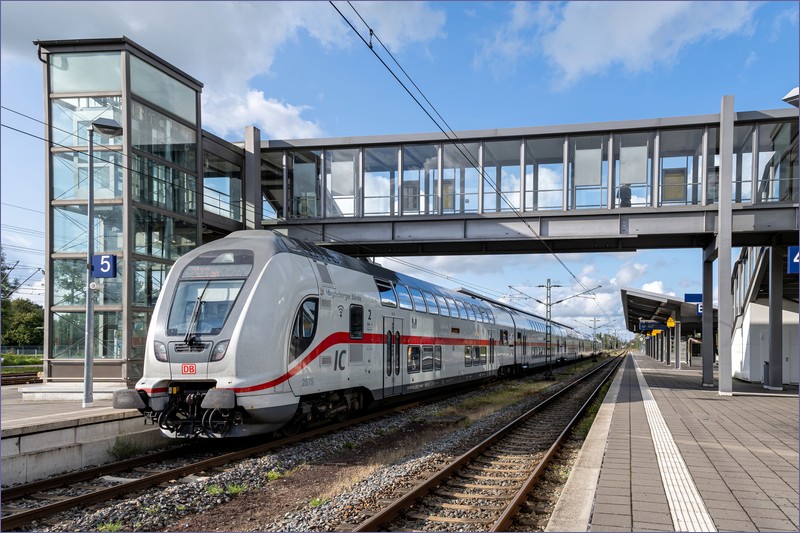
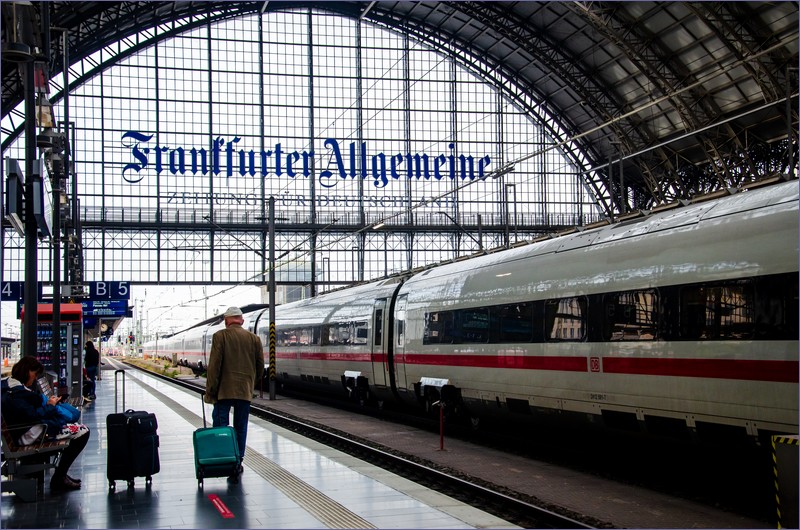
2. Train travel in Germany – regional trains
The network of regional connections is very extensive. Regional trains in Germany are operated by Deutsche Bahn and many other regional and local carriers. Most of regional trains are served by diesel or electric multiple units – trains are equipped with air-conditioning and onboard is one vacuum toilet. Sometimes the only toilet is broken and there is no a second toilet. Double-decker trains are much better.
Train travel in Germany is very cheap if you use regional trains only. From May 2023, you can travel around Germany with a Deutschlandticket, which allows you to use regional transport – rail, bus and other subsidized connections without limitation. The ticket is issued in the form of a subscription. Currently, the ticket costs 49 euros per month. In the summer of 2022 it cost 9 euros.
The ticket will be valid from the first to the last day of each month. There are some differences in how the ticket is accepted in some states, but having a ticket generally entitles you to travel on all S-Bahn trains, regional trains and regional expresses that are part of the integrated public transport system. Moreover, buses, trams, metro are included.
The ticket is not accepted on higher category trains – IC, ICE, EC, TGV and others, as well as on tourist railways and most narrow-gauge railways.
The ticket for 49 euros is available only in digital form (registration is required, also available to people from outside Germany), as a subscription (which can be canceled by the 10th day of the previous month).
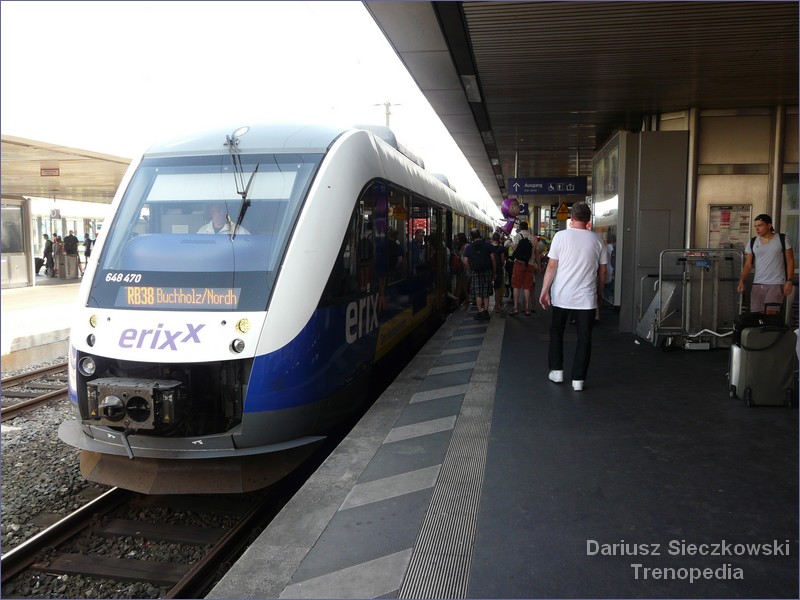
Categories of regional trains in Germany:
S-Bahn – suburban rail services usually provided by Deutsche Bahn in several largest cities. S-Bahn trains usually run as a part of rapid transit systems but sometimes resemble commuter or even regional rail systems. For example Hannover – Paderborn train departing from Hannover Flughafen and ending at Paderborn Hbf run as S-Bahn train. The distance between stations is about 100 km and trains are operated by electric multiple unit used in regional traffic – air-conditioned and equipped with a toilet. Some of the S-Bahn trains has no toilet onboard.
RB – regional train. Regional train usually stops at every station. Most often served by diesel or electric multiple unit. In the past, most common were trains comprised of locomotive and carriages, but passenger carriages for regional trains were sold or donated to the Kosovo and Albania.
RE – Regio Express. Fast regional train. Trains stop only at designated stations. The most common are push-pull double-decker trains, for example Bombardier Twindexx. Regional-Express services are carried out with a variety of vehicles such as DMUs (of Class 612), EMUs (of Class 425 or 426). Many RE services run in hourly intervals.
IRE – semi-fast train, something like. These trains run between the largest cities most often on weekends. They are very popular and were classified as local passenger trains and can therefore be used by passengers with local tickets Trains of this type stop only at designated stations.
Regional trains in Germany use of vastly different types of rolling stock.

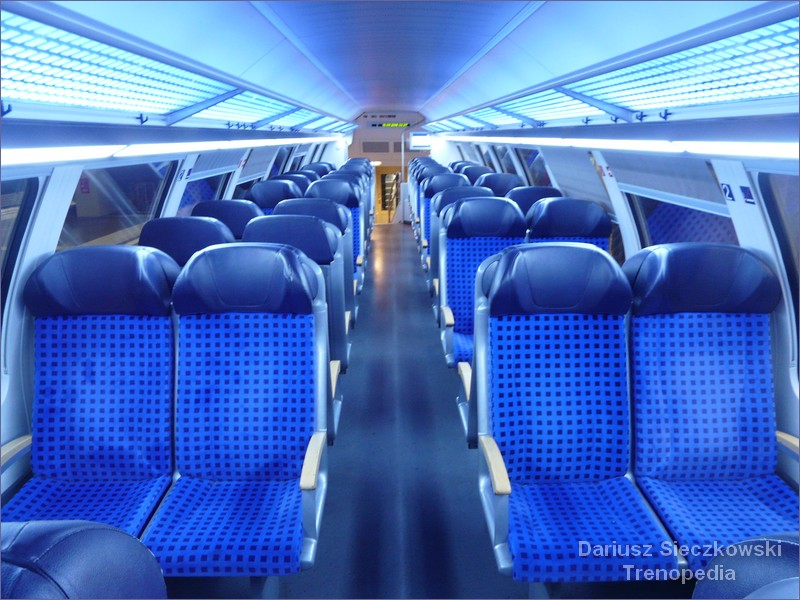
3. Day train trips from the largest cities
There are many railway junctions in Germany. You can book an accomodation and plan one-day train trips from your starting point. Obviously the best option is to stay overnight in largest cities and travel around the region by regional trains. There are some tips for one-day train trips from the German cities. In the future I will add more articles.
Day trips from Berlin by train
Day trips from Cologne by train
Day trips from Dresden by train
Day trips from Frankfurt am Main by train
Day trips from Hamburg by train
Day trips from Hanover by train
Day trips from Munich by train
4. Railways on German Islands
Train travel in Germany is possible also on many German Islands. There are interesting railway lines connecting ports with main town on some islands and railway lines with scheduled passenger traffic.
Borkum – the railway connects the ferry terminal with the center of the town of Borkum.
Langeoog – the railway operates between the island’s harbor and its main village.
Spiekeroog – there is a horse-drawn tram on the former railway route. It operates seasonally.
Wangerooge – there is a narrow-gauge railway operated by Deutsche Bahn
Rügen – standard-gauge railway line connects Stralsund and Ostseebad. There is also heritage railway and short section of broad-gauge railway.
Sylt – the 11-km long causeway connects the North Frisian island of Sylt with mainland. Regional and long-distance trains terminate at Westerland station.
In addition, on the island of Usedom a railway line connects Peenemunde and Wolgast with the Polish city of Świnoujście. There was a 2.5 km long railway on the island of Juist closed in 1982. I will describe these railways in the future.
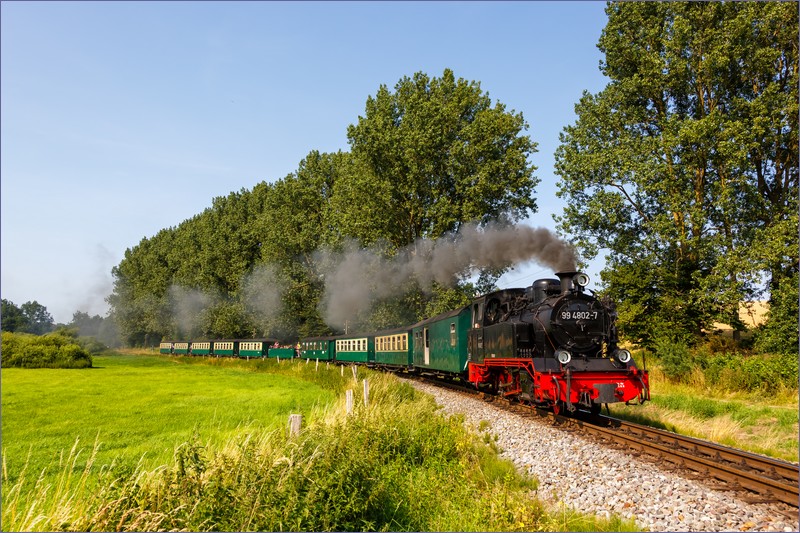
5. Rack railways in Germany
Currently, there are four operational rack railways in Germany.
Wendelstein Rack Railway (Bavaria)
Bayerische Zugspitzbahn (Bavaria)
Drachenfelsbahn (North Rhine-Westphalia)
Stuttgart Rack Railway (Baden-Württemberg)
Rack railways in Germany – additional information
6. Railway museums in Germany
There are more than dozen railway museums in Germany. Most important railway museum is located in Nuremberg and is managed by Deutsche Bahn. Transportation Museums in Dresden and Berlin have exhibitions dedicated to the railways.
Most important railway museums in Germany
7. Scenic railways in Germany
8. The best cross-border passes
German Railways and Public Transport Associations offer a variety of tickets that allow for inexpensive travel by public transport in regions bordering Germany. These tickets are often valid not only on trains but also on regional buses and local public transport in selected cities. However, such tickets are not accepted on long-distance trains (for example, IC, ICE, EC, and long-distance trains operated by private carriers).
Polish-German Border Region
Euro-Nysa – a network ticket that allows for affordable travel in the German-Czech-Polish border area (Eastern Saxony, the western part of Lower Silesia, Liberec and its surroundings). In 2019, ticket prices increased significantly, and an additional ticket is required for rides on the Zittau Narrow-Gauge Railway. Nevertheless, it is still worth it. A bike transport ticket can also be purchased to go along with the Euro-Nysa ticket.
Euro-Nysa ticket – a passenger’s guide
German–French–Swiss Border Region
Europass – a ticket that allows travel on public transportation within the integrated fare system of Strasbourg (on the French side) and Offenburg (on the German side). In practice, this includes commuter trains serving these cities and surrounding towns. Europass is available in a 24-hour version for one person and a 24-hour family version – two adults + two children up to 12 years old (French side) or 15 years old (German side). In Germany, you can also buy:
Europass 24h Mini (valid in zones 20+21 in Kehl and Strasbourg)
Europass 24h FDS (also valid in the town of Freudenstadt)
Ticketplus Alsace – a special offer for holders of day passes for the VRN integrated transport network in the Rhein-Neckar region. Passengers with a VRN day ticket can purchase Ticketplus Alsace, which allows travel during the ticket’s validity on selected railway lines in the French region of Alsace. Available for 1 to 5 persons. Details are provided in the leaflet below.
Ticketplus Alsace – official website
Saar-Elsass-Ticket – a special fare offer for passengers traveling from any station in the Saarland to Strasbourg for a day trip via Hanweiler (border station). The ticket is valid for round trips starting from 9:00 AM on the day of validity until 3:00 AM the following day (the journey must be completed by 3:00 AM). On weekends, ticket validity begins at midnight (00:00). On weekends, the destination can be any train stop in the Bas-Rhin department. The ticket is available for 1 to 5 persons, and the price varies depending on whether you depart from Saarbrücken or another station in Saarland. It is valid in second class on RB and RE trains (Deutsche Bahn) and TER trains (SNCF).
Saar-Lor-Lux – a network ticket allowing travel across Saarland, Lorraine, and Luxembourg (the SaarLorLux Euroregion) in second class on regional trains (RB, RE, TER), or all trains in Luxembourg. It is a day ticket, valid on Saturdays, Sundays, and public holidays. It can be purchased for one person or for groups of 2 to 5 people.
As of March 1, 2020, public transport in Luxembourg is free, including trains, so the terms of this offer may change. Unfortunately, a validity map for the ticket was not found online. On weekdays, passengers traveling on regional trains may use the special Saar–Lorraine fare.
Saar-Lor-Lux – additional information (Deutsche Bahn)
German–Austrian–Swiss Border Region
Bodensee Ticket – a joint offer from the local governments of regions in Austria, Germany, and Switzerland located around Lake Constance (Bodensee). It’s similar to the Euro-Nysa Ticket in Poland. It allows travel on selected trains, buses, and ferries around the lake, divided into fare zones. Available as one-day or three-day tickets, and also for small groups – a maximum of two adults and four children aged 6 to 15 (children under 6 travel free). A dog can be counted as part of the group, counted as a child. In Germany, the ticket is only valid on regional trains (IRE, RE, RB). The Bodensee Ticket also grants discounts on admission to selected tourist attractions.
Bodensee Ticket – a passenger’s guide
Bodensee Ticket – official website
Czech–German Border Region
In addition to the previously described Euro-Nysa offer, the following options are available:
Celodenní jízdenka + Německo – a one-day network ticket that allows travel on trains within a selected Czech region (Pilsen, Ústí nad Labem, or Karlovy Vary) and on selected German railway lines on R and RE trains (Deutsche Bahn and local operators). The price is very affordable, making it possible, for example, to travel from Liberec to Dresden, visiting several towns along the way, or from Cheb to Görlitz, continuing into Poland using a Euro-Nysa ticket bought at a Czech ticket office. The ticket can only be purchased on the day of travel, and is not available in advance. On weekends, you can purchase the Skupinová víkendová jízdenka + Německo, with the same area of validity but allowing travel for two adults and up to three children.
Celodenní jízdenka + Německo – a passenger’s guide
EgroNet – a one-day network ticket for low-cost travel on trains within the Karlovy Vary region and on selected railway lines in Bavaria, Thuringia, and Saxony, i.e., in the Egrensis Euroregion. Available for 1 to 5 people, it is a personalized ticket, valid also on selected urban transport and bus lines in both the Czech Republic and Germany. The ticket must be purchased on the day of travel from Czech Railways (ČD) ticket offices and is not available in advance.
Labe Elbe Ticket – a one-day network ticket valid in the Ústí Region and on selected railway lines in Saxony. It is also valid on selected urban and suburban bus routes. With this ticket, you can travel from Ústí nad Labem to Dresden, stopping in Bad Schandau along the way. In Germany, the ticket is not valid on IC, EC, or ICE trains. It is available at Czech Railways ticket offices on the day of travel only and cannot be bought in advance.
Important: Tickets purchased in Germany are significantly more expensive than those purchased in the Czech Republic.
Labe Elbe Ticket – a passenger’s guide
Belgian–Dutch–German Border Region
Euregio Ticket Maas-Rhein – a one-day network ticket valid in the Maas–Rhine Euroregion, covering border areas of Belgium, the Netherlands, and Germany. For a relatively low price, you can visit Aachen, Liège, Maastricht, and several other smaller towns. The ticket is not valid on ICE or Thalys trains. On weekdays, the ticket is valid for one person at that price. On Saturdays, Sundays, and public holidays, it is valid for up to two adults and three children.
Euregio Ticket Maas Rhein – a passenger’s guide
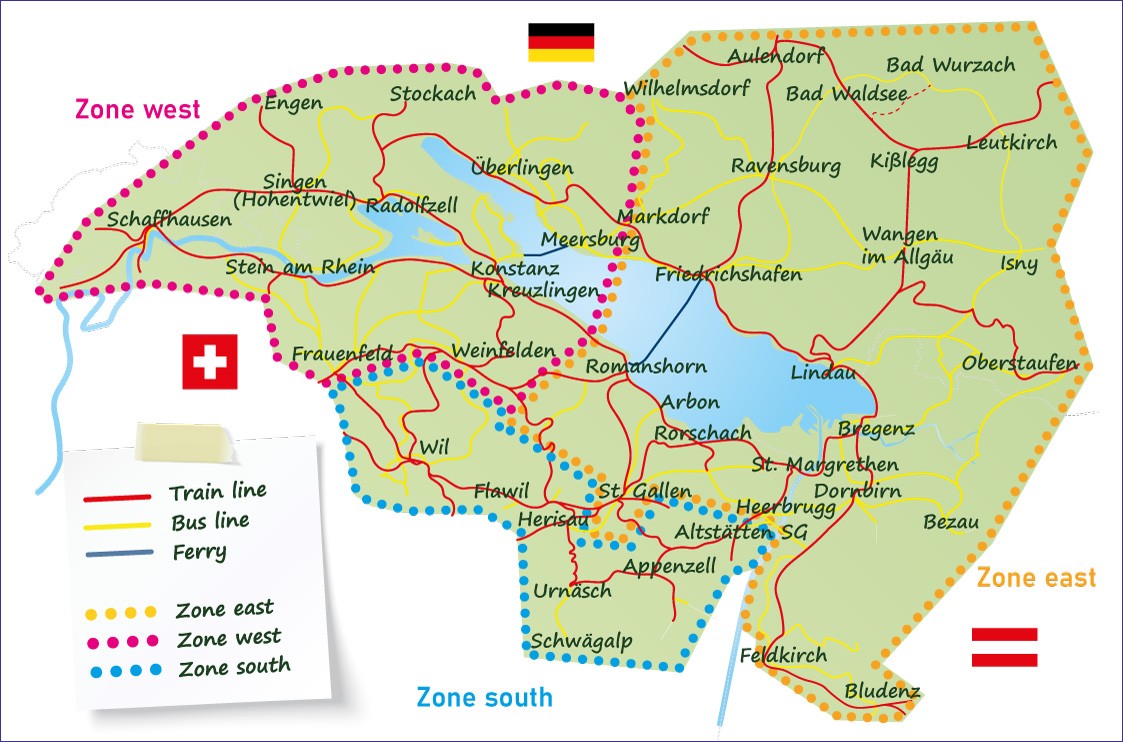
9. Train travel in Germany – international trains
Germany has a large number of international connections with many countries in Europe. Passengers can choose between daytime, overnight, regional, and high-speed ICE and TGV trains. There are numerous discounts and promotions available for international tickets. Tickets for many international trains from Germany are available on International Bahn website .
Austria/Slovenia/Croatia
Numerous long-distance and local trains operate between Germany and Austria, including the Nightjet night trains operated by Austrian railways.
Most popular routes:
Munich – Klagenfurt
Munich – Vienna
Frankfurt am Main – Vienna
Berlin – Vienna
Additionally, there are numerous regional connections, such as Munich – Kufstein (operated by Meridian), Passau – Linz, Lindau – Bregenz.
Trains also run from Stuttgart to Zagreb via Ljubljana (including an overnight train).
Tickets can be purchased also on the Austrian railways website at shop.oebbtickets.at
Trains between Germany and Austria – a comprehensive guide
Belgium
Some long-distance connections between Belgium and Germany are operated by Eurostar trains. Different fares apply. For more information, visit www.eurostar.com. Deutsche Bahn trains run less frequently, but there is a connection from Brussels to Frankfurt am Main.
Additionally, there are regional trains running from Aachen to Liège.
In 2023, Thalys merged with Eurostar.
Eurostar – official website
Twice a week, the European Sleeper night train runs from Prague to Brussels, via Dresden, Berlin and Hanover. Train is comprised of a bit old carriages, but for undemanding travelers, it will be a good choice.
Ticket prices start at 49 euros in seating carriages, 79 euros in couchettes (6-bed compartment); the cheapest beds in sleeping cars cost over 100 euros. The ticket price depends on the occupancy of a particular connection, so they can vary significantly.
European Sleeper – official timetable
Trains between Germany and Belgium – addtional information
Czech Republic, Slovakia and Hungary
There are numerous long-distance international trains from the Czech Republic to Germany, such as the Eurocity trains from Berlin to Prague, continuing to Bratislava and Budapest; there are also connections from Prague to Munich via Pilsen. Some trains from Prague to Germany continue their journey from Berlin to Hamburg and Kiel
There are many regional connections operated by various carriers (most frequently Vogtlandbahn under different brands), for example:
Zittau – Liberec (the train passes through Polish territory but does not stop in Poland)
Zittau – Varnsdorf
Bad Schandau – Rumburk
Bad Schandau – Děčín
Marktredwitz – Cheb – Hof
Cheb – Nuremberg
Cheb – Zwickau
Domažlice – Schwandorf
Železná Ruda – Bayerisch Eisenstein
Promotional tickets for long-distance connections can also be found in the Czech Railways online store.
Trains between Germany and the Czech Republic – a comprehensive guide
Denmark
In mid-December 2019, connections between Germany and Denmark through Puttgarden and Rødby were suspended. Trains covered part of the route by ferry. Currently, trains from Hamburg to Copenhagen and Hamburg to Aarhus operate via Kolding, resulting in longer travel times.
Denmark can also be reached by night trains Berlin – Stockholm. The train operated by the Swedish railways SJ runs year-round, and seasonally there is a train operated by the company Snalltaget.
Local trains also run between Niebüll and Tønder.
Trains between Germany and Denmark – additional information
France
Long-distance connections are partially operated by the Eurostar company. Additionally, there are TGV trains, such as Paris – Munich, Paris – Stuttgart, and Paris – Frankfurt.
Regional connections include Strasbourg – Kehl, Saarbrucken – Forbach, and Saarbrucken – Metz.
Since December 10, 2023, there has been a night train service from Berlin to Paris. The Nightjet train from Berlin to Paris operates twice a week. The train consists of seating carriages, sleeping carriages, and sleeper carriages. If you don’t come across promotional tickets, prices are very high. The train composition includes older Nightjet train carriages.
In December 2024 a new daytime train between Berlin and Paris was inaugurated.
Trains between Germany and France
Netherlands
Long-distance trains run to Amsterdam, including Berlin – Amsterdam via Hanover and Cologne (IC, ICE, and ICE Sprinter). Additionally, there are regional connections, such as Arnhem – Dusseldorf, Leer – Groningen (often replaced by bus service), and Aachen – Maastricht.
Trains between Germany and the Netherlands
Luxembourg
Rail connections from Luxembourg to Trier, with selected services continuing to Koblenz. Since March 1, 2020, free public transportation, including trains, is available in Luxembourg for passengers traveling in second class.
Poland
There are many passenger trains between Poland and Germany. Long-distance trains are operated by PKP Intercity in cooperation with Deutsche Bahn. These trains run on the following routes:
Berlin – Warsaw (via Poznan)
Berlin – Gdansk and Gdynia (via Poznan)
Berlin – Krakow (via Wroclaw and Katowice)
PKP Intercity – online shop
Deutsche Bahn – online shop
There are cheap promotional tickets but they are limited and you must buy tickets in advance.
Regional trains between Poland and Germany are operated by many Polish and German regional operators.
Szczecin – Berlin (operated by Deutsche Bahn)
Kostrzyn nad Odrą – Berlin (Niederbanimer Eisenbahn)
Zielona Góra – Gubin (Polregio)
Zielona Góra – Frankfurt am Oder (Polregio)
Zielona Góra – Görlitz (Polregio)
Jelenia Góra – Görlitz (Koleje Dolnośląskie)
Wrocław – Görlitz (Koleje Dolnośląskie)
Świnoujście Miasto – Stralsund (Deutsche Bahn Regio Nordost)
Trains from Görlitz to Zittau stop at Krzewina Zgorzelecka station. The station is located in Poland, 50 meters from the German-Polish border and serve small German town of Ostritz.
Trains between Germany and Poland – a comprehensive guide
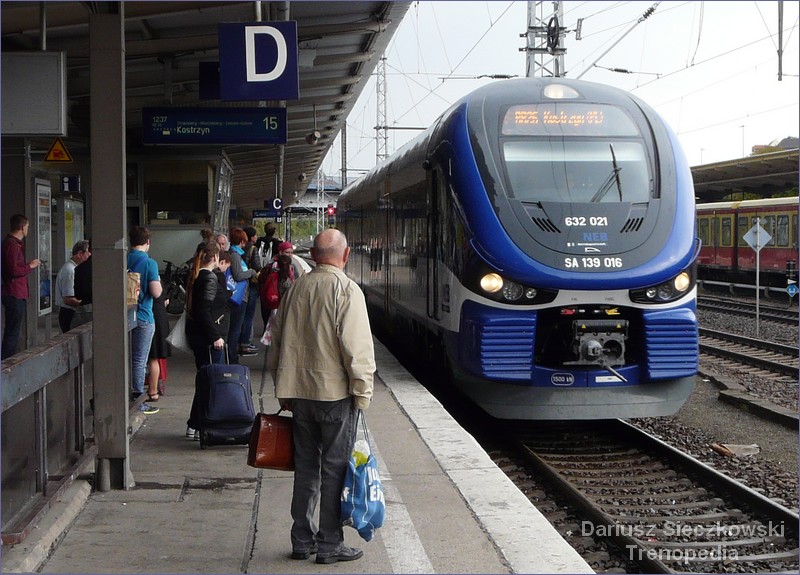
Switzerland
Numerous long-distance connections from various parts of the country, such as Hamburg – Basel, Munich – Zurich. Regional connections include Schaffhausen – Singen, Basel – Zell.
Sweden
Direct night trains operate from Berlin to Stockholm – one operated by Swedish Railways SJ, the other, seasonal, by Snalltaget.
From Stockholm, travelers can continue their journey by day or night trains to northern Sweden, for example, to Abisko or Luleå.
Tickets for the Hamburg – Stockholm train (later in the Berlin – Stockholm route) are available on the Swedish railways website. Thanks to government subsidies, tickets are relatively inexpensive.
A seasonal direct train operates from Stockholm to Berlin via Denmark, consisting of sleeping carriages. This service is operated by Snalltaget.
Swedish Railways – official website
Snalltaget – official website
Italy
There are international trains from Munich to Bolzano (daytime train) and an overnight train from Munich to La Spezia.
10. A brief history of the railways in Germany
The earliest form of railways, wagonways, were developed in Germany about 1550. These pathways of wooden rails called were the predecessors of modern railways, making it easier for horse-drawn wagons or carts to move along dirt roads.
At the end of 18st century, from 1787, about 30 kilometres long a network of horse-drawn wagonways, was built above ground for the coal mines of the Ruhr in order to speed up the transportation of coal to loading quays on the River Ruhr. Some of these wagonways used iron rails. The network was not available to the public as transport.
The first horse-drawn railway in Germany connected Hinsbeck, south of Essen, along the Deilthal to Nierenhof, near Velbert. The horse-drawn railwaywas put into operation On 20 September 1831. 820 mm railway had was a total length of 7,5 km. The line was intended to carry coal but from 1833 it also carried passengers. In 1847, it it was converted to 1,435 mm gauge, extended north to Steele Süd and south to Vohwinkel. Horses were replaced by steam locomotives.
The first steam-powered railway in Germany between Nuremberg and Fürth was inaugurated on 7 December 1835 (6 km). The Bavarian Ludwig Railway was built to a standard gauge.
Related articles:
Railways in Europe by country
Harz Narrow Gauge Railways
Trains in Langeoog
Trains in Wangerooge
Trains in Borkum
Horse-drawn tram in Spiekeroog
